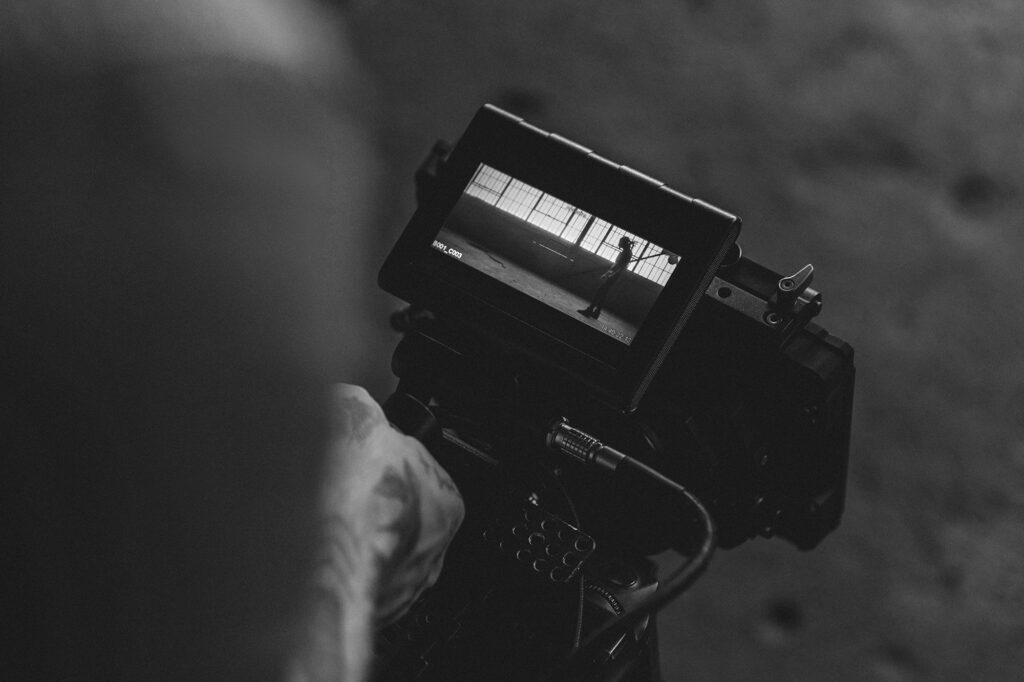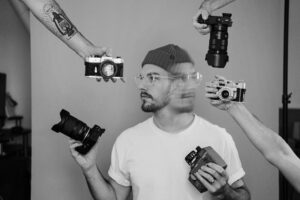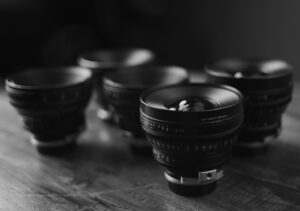When people talk about what makes a good video, lighting is usually high on the list. But whether you’re working with natural light or artificial lights, you won’t get the results you want unless you understand exposure. In this post, we’ll break down exposure in videography, especially when it comes to shutter angle, a concept often overlooked by beginner filmmakers.
TL;DR
- Exposure in video is controlled by the exposure triangle: aperture, shutter speed, and ISO.
- Video is just a series of still images (frames per second or FPS).
- Shutter speed (or shutter angle) affects both brightness and motion blur.
- Standard cinematic motion blur comes from using a 180° shutter angle (or shutter speed = 1 / 2×FPS).
- Use different shutter angles creatively. But know the rules before you break them.
The Exposure Triangle in Video
If you’re not familiar with the exposure triangle -aperture, shutter speed, and ISO- check out my exposure guide for photographers first. The principles are nearly identical in photo and video, but here’s a quick recap:
1. Aperture
The wider your aperture (e.g. f/2.8), the more light reaches the sensor, and the shallower your depth of field.
2. ISO
The higher your ISO, the brighter your image, but the more digital noise you’ll get.
3. Shutter Speed
Slower shutter speeds allow more light, but increase motion blur. Faster shutter speeds darken the image and reduce motion blur.
In photography, this blur is often unwanted. But in video, motion blur is an essential part of how movement looks natural on screen. That’s why shutter speed works a bit differently here.
Video = Frames Per Second (FPS)
Video is essentially a bunch of still images (frames) shown in rapid sequence. The number of frames per second (FPS) you choose -like 24, 30, or 60- affects how smooth the motion appears.
This also directly impacts your shutter speed, and that’s where shutter angle comes in.
What Is Shutter Angle?
In old film cameras, there was a rotating disc with an open wedge that worked as the shutter, and let the light hit the film.
This wedge was measured in degrees out of 360°. The larger the open angle, the longer each frame was exposed.
Here’s how it works:
- 360° shutter angle = the disc is fully open = longest exposure = most motion blur
- 180° = half open = standard cinematic motion blur
- 90° = shorter exposure = sharper motion with less blur
For example, if you’re shooting at 24 FPS:
- 360° shutter angle = 1/24 sec shutter speed
- 180° shutter angle = 1/48 sec
- 90° shutter angle = 1/96 sec
General formula: Shutter Speed = (1 / FPS) × (360 / shutter angle)
How Shutter Speed Affects Video
- Slower shutter speed (larger shutter angle) = more motion blur, brighter footage
- Faster shutter speed (smaller shutter angle) = less motion blur, darker footage
So a 360° shutter angle will give you very fluid, dreamlike motion (often too blurry), while a 90° angle gives you crisp, stuttery motion (useful for action or tension).
Motion Blur & Viewer Perception
Standard 180° shutter angle feels the most “natural” because it closely mimics how we see motion in real life. That’s why:
- Most movies and TV shows use 24 FPS with a 180° shutter angle (1/48 sec)
- Msany digital cameras don’t offer 1/48, so we use the closest: 1/50 sec
Shutter Speed Rule for Video
If you want cinematic motion:
- Shutter Speed = 1 / (2 × FPS)
Examples:
- 24 FPS → 1/48 sec → use 1/50 sec
- 60 FPS → 1/120 sec
- 120 FPS → 1/240 sec
If you break this rule:
- Slower shutter = more blur, dreamy/ghostly effects (good for certain moods)
- Faster shutter = less blur, staccato/stiff look (good for action or stylized scenes)
Tip: Unless you’re aiming for a specific effect, stick to the rule. Otherwise, your video might feel “off” to the viewer, even if they can’t explain why.
In addition to light, you should also pay close attention to color for better video. You can start by reading our white balance guide.
Last Words
Exposure and shutter speed or angle are among the most essential concepts in videography. Mastering them allows you to:
- Shoot in different lighting conditions
- Control motion blur intentionally
- Create a consistent, professional visual style
Grab your camera and experiment. Try different shutter angles, test motion blur, and develop an eye for what works. It’s one of the most practical skills you can build as a video creator.
Want to keep learning? Follow me on your favorite social media (handle everywhere: @MediabyHamed / search for Hamed Media) or subscribe to my newsletter for more practical tips and guides like this.
FAQ
What is shutter angle in video?
It’s a filmmaking concept that controls motion blur by setting the shutter speed relative to the frame rate.
Is shutter angle the same as shutter speed?
They’re related, but shutter angle is a rotating disc measurement used in cinema, while shutter speed is in seconds.
What’s the 180 degree shutter rule?
It suggests setting shutter speed to double your frame rate for natural motion blur.




